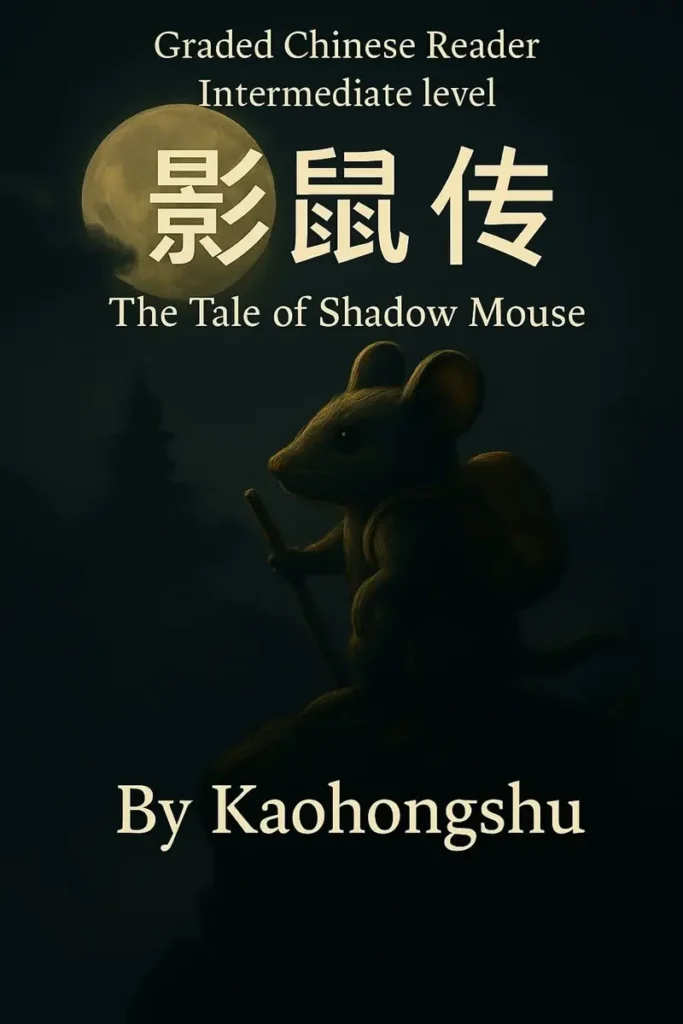Neuroscience reveals how our brains pick up new languages. So what does that mean when it comes to learning Chinese?
There is as much information out there about the dos and don’ts of learning Chinese as there is sand in the Yellow River. However, this advice usually doesn’t come specifically from a neuroscience perspective, neither does it take into account how the brain actually works. That’s why in this article, I explore how the brain processes language, what that means for learning Chinese, and how to structure your learning routine for long-term success.
How your brain handles Chinese
You probably guessed it: Chinese activates the brain differently than alphabet-based languages. Research shows that reading Chinese characters stimulates both the left and right hemispheres of the brain. The left hemisphere handles language processing (as it does with other languages), but the right hemisphere gets involved because Chinese characters are more visual and spatially complex.
Also, Chinese is tonal, which means the pitch of a word can change its meaning. This engages parts of the auditory cortex more intensively than non-tonal languages. For learners whose native language is not tonal, this can initially feel like brain gymnastics – but neuroplasticity (your brain’s ability to rewire itself) is on your side.
Let’s dive into best practices backed by neuroscience.
1. Spaced repetition
When I mention spaced repetition, I know I’m probably beating a dead horse. It’s a well-known learning technique. Many learners swear by it. I have written about the sense and nonsense of spaced repetition, as have others. The spacing effect, discovered by German psychologist Hermann Ebbinghaus, shows that information is better retained when reviewed at increasing intervals. For many Chinese learners this has proven to be an efficient way of learning and retaining new vocabulary.
Best Practice: Use an SRS (Spaced Repetition System) tool like Anki or Pleco Flashcards for character and vocabulary review. Customize your cards with audio if you can, add example sentences, and even images to reinforce multiple neural pathways.

Side note: SRS is generally great at an early stage. Later on, it is not always possible or useful to create a flashcard for every new word. It is simply too much. Creating flashcards takes time, not to mention that the daily reviewing which will sooner or later consume too much study time. What’s more, I noticed that unless I add lots of context (text, audio etc.) my brain failed to process new vocabulary in a meaningful way.
Alternative idea: Write your own flashcards (by hand). This is a laborious task, but in my experience this is more effective than learning with pre-made materials. Here too, you can add your own examples, ‘artwork’ and mnemonics. Because writing takes more time, you’re forced to be more economical about which vocabulary item to include and what to leave out. I think that’s a good thing.
2. Leverage multisensory learning
The brain learns more deeply when multiple senses are involved. This is true for Chinese as well: listening to the pronunciation of word, repeating it out loud, reading the character, writing it by hand and using it in conversation – all these things activate different parts of the brain, forming a more durable memory trace.
Best practice: Practice writing characters with a stylus or pen on paper, shadow native speakers using apps like speechling or Immersive Chinese, and read aloud. The more senses you involve, the better.

Side note: Although I agree that involving multiple senses is generally a good idea, I don’t think it’s either useful or doable to write every single character you encounter. But the main point is, the deeper your understanding of characters and their composition, other aspects of your learning will profit and visa versa. When you’re aiming for long-term retention, repeatedly combining reading, writing, listening and speaking is the way to go.
Study Chinese with background music: yes or no? Background music can support learning by boosting mood and focus, particularly with calming, instrumental tracks like classical, traditional Chinese music or lo-fi. Research shows it may enhance memory and performance on certain tasks, especially for those who find it personally motivating. However, music with lyrics or high volume can distract, especially during reading or tasks that require deep concentration. Overall, its effectiveness depends on the individual and the task – so it’s best used strategically and customized to what helps you stay focused without getting sidetracked.
3. The power of context
Many people in school are forced to learn vocabulary lists without examples. But unfortunately the brain doesn’t work like a dictionary. It needs context. That’s why good teachers introduce new words in the context of a story, dialogue, or real-life scenario, so your brain encodes that information more effectively by connecting it to existing knowledge and experience.

Best Practice: Use graded readers or apps like Maayot, Du Chinese or The Chairman’s Bao for self-study. Try to create mini-stories for new vocabulary using your own interests or daily life. You can use ChatGPT or Deepseek to write short stories and create “new contexts” for familiar vocabulary or chat about your preferred topics on Talkpal, strengthening your fluency in those areas by actively producing output.
4. Focus on active recall, not just recognition
Reading and listening are important, but active recall (producing the word yourself) strengthens memory more deeply than passive exposure. Neuroscientific studies show that retrieval practice creates stronger and more accessible neural pathways.
Best practice: Speak out loud. Try to build sentences. Speak to yourself in Chinese. Write journal entries in Chinese. Challenge yourself to describe your day or talk about your favorite food and try to respond without peeking at a dictionary. Don’t worry too much about mistakes – mistakes are data for the brain to improve.
5. Build a habit loop with dopamine triggers
The brain thrives on reward loops. When you complete a small learning goal and feel a sense of progress, your brain releases dopamine – the motivation neurotransmitter. This creates a positive feedback loop that makes you want to keep going. Taking small steps and celebrating the little stuff also helps to avoid getting frustrated over big goals like becoming fluent in one year.
Side note: An app that uses this very successfully is of course Duolingo, which is why I am somewhat skeptical. Of course, it is not about staying loyal to one app, but about developing effective learning habits and having fun. If you enjoy it, you will continue anyway.
Best practice: Break study sessions into chunks and finish each with a mini-goal like “I practiced pronunciation for 10 minutes” or “I read one dialogue.” Celebrate those wins. Participating with other people in learning challenges like listening to as much Chinese content as you can (setting a 15 hour goal for one month for example) can also be a powerful strategy, as ‘competing’ with others helps you to stay on track.
Online studying vs offline studying: While mobile apps and online tools offer flexibility, interactivity, and immediate feedback, they also come with a major downside: distraction. Studies show that smartphones and digital devices are linked to frequent attention shifts, reduced focus, and increased cognitive load due to notifications, multitasking, and the temptation of non-study apps. In contrast, offline materials like books and printed exercises foster a more sustained, focused learning environment. Audio resources – such as podcasts or recorded dialogues – also allow for immersive, screen-free study, often better suited for building listening and comprehension skills without digital interference. Ultimately, while digital tools can enhance language learning, their effectiveness depends heavily on a learner’s ability to manage distractions and create focused digital routines.
6. Sleep: the unsung hero of memory
During sleep, especially during REM and slow-wave stages, your brain consolidates new memories, including language. Cutting sleep short can sabotage even the best study session, so it’s best to go to bed early.
Best practice: Study key material in the evening, ideally 1–2 hours before bedtime. Review lightly, then let your brain do the heavy lifting while you sleep. Maybe you noticed this as well: Reviewing prior to sleep what you learned during the day helps to remember it better the day after.

Detour: Can you learn Chinese during your sleep? Unfortunately, no, you can’t learn Chinese in your sleep, but – as mentioned before – sleep can help you consolidate what you’ve already studied. Passive learning while fully asleep (like playing audio lessons and waking up fluent) has no solid scientific backing. You won’t learn entirely new vocabulary, grammar, or pronunciation this way. So while sleep is crucial to the learning process, actual learning still needs to happen when you’re awake.
7. Make it social
Even if you’re self-studying, social interaction activates emotional and social processing centers in the brain, which helps anchor language learning. Plus, real-time feedback makes your brain adapt faster. Again, real-life communication is everything. It cannot be replaced by AI or even the most intensive self-study activities. Learning just doesn’t have the same impact without social interaction.
Best practice: Join language exchange communities like HelloTalk, Tandem, or local meetups. Find Chinese people in your area or get an online tutor for regular Chinese lessons. Even 10 minutes of conversation per week can accelerate fluency.
Good practices
| Practice | Why it works |
|---|---|
| Learn vocab in context | Activates deeper semantic memory |
| Use spaced repetition (SRS) | Leverages long-term memory through intervals |
| Practice active recall (speak/write) | Strengthens retrieval pathways |
| Train tones & intonation daily | Refines auditory discrimination and speech production |
| Write relevant characters by hand (with correct stroke order) | Builds motor memory and visual-spatial recognition |
| Use multisensory input (listen + read + write + speak) | Enhances neural encoding |
| Review before sleeping, sleep well after studying | Consolidates new memories overnight |
| Start speaking early | Triggers adaptive language circuits via feedback |
| Use immersion tools (graded readers, native media) | Builds pattern recognition and comprehension |
Bad practices
| Practice | Why It hurts learning |
|---|---|
| Cramming isolated vocab | Overloads short-term memory, poor retention |
| Relying only on recognition | Creates illusion of mastery without recall strength |
| Ignoring tones | Leads to confusion and communication breakdown |
| Skipping writing practice | Weakens character recall and motor encoding |
| Studying only one way (e.g., just reading) | Limits neural engagement and retention |
| Delaying conversation until “ready” | Misses early feedback for learning |
| Translating everything into English | Slows fluency and impairs direct language processing |
| Studying without sleep | Blocks memory consolidation and pattern formation |
In summary
Chances are, you’re already using many of the effective approaches discussed here, and you likely have a good sense of what works for you and what doesn’t. The core message is simple: the more we understand how our brains learn, the better we can tailor our study habits to match. Learning Chinese isn’t about brute force – it’s about working with your brain. By tapping into neuroscience-backed techniques like spaced repetition, multisensory input, active recall, and positive habit loops, self-study can shift from a frustrating grind to a rewarding, brain-friendly journey. Your brain is already wired for language; it just needs the right tools and steady practice to unlock its full potential.
Affiliate links
Disclosure: These are affiliate links. They help me to support this blog, meaning, at no additional cost to you, I will earn a small commission if you click through and make a purchase.


















